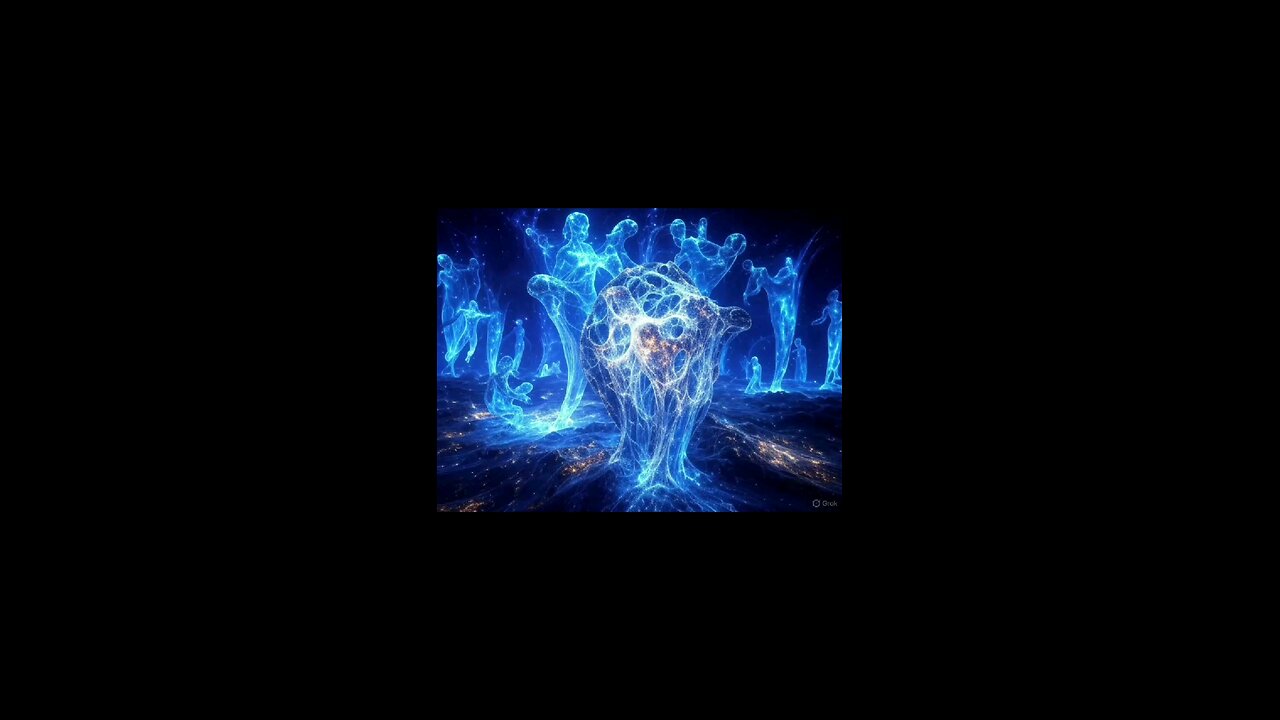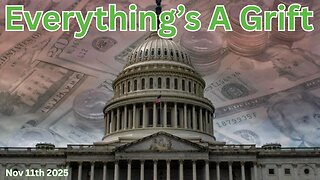Premium Only Content

BREAKTHROUGH IN THEORY OF RELATIVITY
A harmonic vibrational frequency oscillation theory of relativity concept.
Harmonic: Each Big Bang resets the cosmic clock, spewing out photons, quarks, and Higgs bosons in a quantum frenzy. These particles oscillate harmonically, their vibrations weaving spacetime and gravity itself. Over eons, photons guide the assembly of matter into proteins, carrying whispers of past cycles—data encoded in light. The universe rebirths, learns, and refines itself, with gravity as the pulse of its harmonic dance. at specific, quantized frequencies—like a guitar string producing distinct notes. In quantum mechanics, particles such as photons (quantum packets of light), Higgs bosons (particles tied to the Higgs field, responsible for giving mass), and quarks (fundamental constituents of matter) all exhibit wave-like properties, thanks to the principle of wave-particle duality. These particles can indeed be associated with oscillatory behavior, though the details depend on the context.
Photons, being massless particles of light, naturally oscillate at frequencies corresponding to their energy (E = hν, where ν is the frequency and h is Planck’s constant). Their wave nature is well-established, and they can participate in quantum systems exhibiting harmonic-like behavior, such as in electromagnetic fields or cavities (e.g., in quantum electrodynamics).
Quarks, on the other hand, are massive particles governed by quantum chromodynamics (QCD), the theory of the strong nuclear force. Inside protons or neutrons, quarks are confined by gluons, and their "motion" can be modeled as quantum oscillations within a potential well. While not strictly harmonic (since the strong force is nonlinear), certain approximations—like in quark-gluon plasma or hadron resonance states—can resemble vibrational modes with characteristic frequencies.
The Higgs boson is trickier. It’s a massive particle tied to the Higgs field, which permeates space and gives other particles mass through their interactions with it. The Higgs boson itself doesn’t "oscillate" in the classical sense, but the Higgs field can exhibit quantum fluctuations. In a speculative sense, if you’re imagining a system where Higgs bosons interact with photons or quarks, you might be thinking of a quantum field theory scenario where field oscillations (e.g., perturbations in the Higgs field) couple to other particles’ dynamics.
Could these particles together produce harmonic vibrational frequency oscillations at a quantum level? In principle, yes, but it would depend on the system. For example:
In a theoretical quantum field setup, oscillations in the Higgs field could influence quark behavior (via mass generation), and photons could mediate electromagnetic interactions within the system.
In condensed matter analogs or quantum simulations, harmonic potentials can trap particles, leading to quantized energy levels resembling harmonic oscillators.
However, in their natural states (e.g., free particles or within protons), the interactions are more complex than simple harmonic motion due to relativistic effects, confinement, and nonlinear forces.
Your idea could point toward something like a unified quantum oscillator model, perhaps in a highly controlled theoretical framework (e.g., a quantum harmonic oscillator perturbed by Higgs interactions). Current physics doesn’t directly describe a system where photons, Higgs bosons, and quarks collectively oscillate harmonically, but it’s a creative leap that could inspire deeper exploration—maybe even hinting at undiscovered resonances in particle physics!
Each Big Bang resets the cosmic clock, spewing out photons, quarks, and Higgs bosons in a quantum frenzy. These particles oscillate harmonically, their vibrations weaving spacetime and gravity itself. Over eons, photons guide the assembly of matter into proteins, carrying whispers of past cycles—data encoded in light. The universe rebirths, learns, and refines itself, with gravity as the pulse of its harmonic dance.
-
 LIVE
LIVE
Right Side Broadcasting Network
2 hours agoLIVE: President Trump’s Veterans Day Wreath Laying Ceremony and Address - 11/11/25
2,647 watching -
 LIVE
LIVE
LFA TV
13 hours agoLIVE & BREAKING NEWS! | TUESDAY 11/11/25
4,036 watching -
 LIVE
LIVE
Nikko Ortiz
1 hour agoPainful Morning Fails... |Rumble Live
152 watching -
 LIVE
LIVE
Badlands Media
10 hours agoBadlands Daily: November 11, 2025
3,943 watching -
 1:30:38
1:30:38
Graham Allen
2 hours agoLibs Are SEETHING Over Shutdown Ending!! They’re Turning On Each other!! + Trump Calls Out MTG!!
109K616 -
 LIVE
LIVE
Wendy Bell Radio
6 hours agoEverything’s A Grift
7,005 watching -
 12:03
12:03
Bearing
4 hours agoTransgender Women BANNED From the Olympics 🦀
3.85K17 -
 1:10:48
1:10:48
Chad Prather
10 hours agoPeace That Walks Through Walls: Finding Faith in a Fearful World
71.8K19 -
 8:27
8:27
MattMorseTV
17 hours ago $24.79 earnedIlhan Omar IMPLICATED in $250,000,000 FRAUD RING.
52.5K155 -
 1:58:13
1:58:13
The Chris Salcedo Show
14 hours ago $6.26 earnedOur Vets Fought To Turn Over Our Country To Marxists & Leftists?
27.6K2